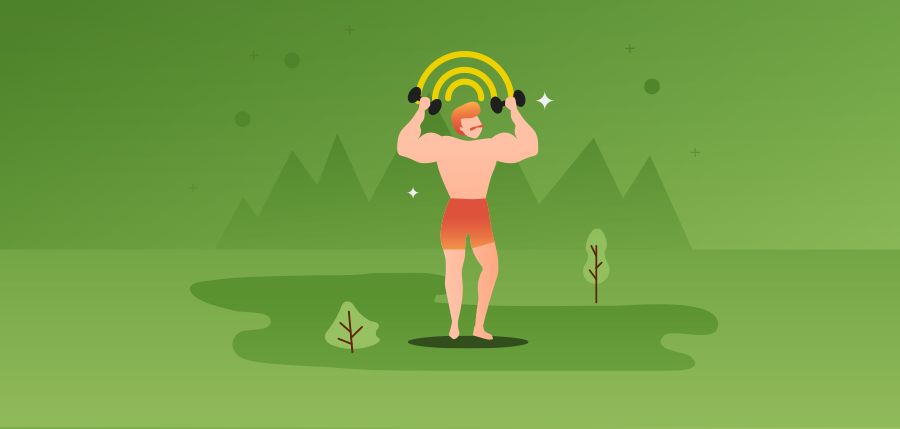
A Beginner’s Guide to Meditating
Millions and millions of people worldwide are being treated for mental illness. There are 40 million people just in America with mental health diagnoses. And worldwide, it’s estimated that one in four people will have a mental illness at some point in life.
That’s staggering.
But the ancient practice of meditation has been shown, time and again, to benefit anxiety and depression. In fact, it’s been shown to be equal to psychiatric medications for mild anxiety and depression.
So why doesn’t everyone on the planet do it? A better question would be, why don’t you?
It could be that we think because meditation is free and “easy”, it can’t be effective. After all, we need to get a prescription from a doctor for real, noticeable results, right? Or maybe we’ve gotten so bad at self-care and connecting with our inner selves that it doesn’t seem like it could help. Or our problems and emotions have become too complicated.
While all of those beliefs are understandable, they’re just not true. Keep reading this guide to find out how to start meditating, so you can begin to reap the real benefits of this practice.
What is Meditation, Really?
Some people believe meditation is a religious or spiritual practice, and because they’ve been raised a certain way, it doesn’t apply to them. While some meditators are affiliated with certain religious practices, many are not.
And meditation doesn’t always consist of sitting on a floor and trying to think of nothing. In fact, trying to make your mind do anything during meditation is totally against the point.
There are meditation styles with very specific structures and goals, however. It can get confusing when trying to learn about all the various ways to meditate. For now, we can just focus on how to get started, and what your new practice should look like.
First, you should know that meditation is simply bringing your mind back to a focus on a simple thing, like breathing. The mind has a habit of wandering and getting caught up in negative or painful stories. When we discipline our mind with gentle, calm focus that we set aside for a specific time, we can train our brain and nervous system to be more relaxed and resilient. That translates to any area of life.
Meditation is a lifelong discipline that will deepen and grow over time.
The only goal is to become consistent with meditation and to not expect anything from it, or yourself. We have so many judgments and expectations about everything in life. Meditation is a time to let go of those rules.
It’s important to know this: trying to meditate for a week, and then deciding you don’t see or feel any results, is counterproductive. It is not a quick fix, although it can reduce anxiety pretty quickly.
So what should you do first?
How to Start Meditating: Keep it Simple
If you try to start with a big chunk of time, or with complicated mantras, you’ll be discouraged. Your brain and mind need training; that takes time and patience. To begin, don’t do more than 5 minutes.
You can gradually increase your time over a period of weeks. Try to do a few minutes first thing in the morning, before the stress of the day kicks in.
Where you meditate will have a big impact on your success and commitment to it. It really needs to be very quiet, so you might need to find a separate room and wear headphones or earplugs.
Most meditation instructors will tell a student to sit comfortably, with no need to go into a lotus position. On the floor is great or on the ground outside. Some people have discomfort in their hips or spine and require a chair or a pillow. If you won’t fall asleep, you can always lie down, too.
A great way to fall asleep at night is by listening to a guided yoga nidra meditation, which you can do in bed. Speaking of yoga, did you know that can be a meditation, too?
You might do yoga for a great, low impact workout. But yoga is intended to be a meditative movement. Connecting to your breath and being in your body, in the moment, is a great way to turn your yoga routine into a meditation.
What Style Should I Follow?
If you’re just starting out, keep it simple. Really, really simple. That means to focus on your breath and only your breath. To do this, you bring your attention to how the air feels as it enters and leaves your nose, or your mouth.
You will likely feel other sensations, like aches and itches. That’s normal. Try not to get frustrated with the urge to adjust or scratch. And if you have to, that’s okay too. Just bring your focus back to your breath.
You will notice that your mind will almost immediately want to wander. Your work or chores for the day, or a fight you had, will all be on replay in your mind. This is also totally normal. You aren’t failing at meditation.
It’s like doing repetitions of an exercise in the gym. When your mind wanders, notice it and bring it back to your breath. When it wanders again, bring it back. And again, and again. These are the repetitions that will make your mind, and your focus, stronger.
When Should I Meditate?
We briefly mentioned above that first thing in the morning is great, but not everyone can match this schedule. It can be whenever you know you can commit to the time. And when you won’t be interrupted.
Some people find that setting aside some time during their work day is a great way to relax and see the bigger picture. Especially if it’s been a bad day. But others will find it tough to focus in the midst of remembering demands and deadlines.
For others, and end-of-the-day gratitude meditation is ideal. This is when their day is done and the stress levels are winding down. But you might fall asleep before you’re ready to, and this could be frustrating.
Really, it’s about finding what works for you. You’ll need to experiment a bit and remember that things change. Meditation can work in your mornings in one month, but better in the evening another month.
Find a Community
A great way to stick to a new practice and meet other people doing the same is to join an online or real-life group. You’ll not only be held accountable, but there are meetups and scheduled practice times that can help you feel less solitary. Meditating is often about solitude, but not always about being solitary. The goal is to connect inward and outward.
You can also invite friends or family members to start with you. Gently reminding someone you care about, and having them return the favor, can keep you on track. You’ll also find that the tension in your relationships will reduce as a side effect of meditation.
But What if it Doesn’t Work for Me?
Let’s remind you of two things: It’s a long-term practice, so you won’t be awesome right away and the goal isn’t to judge it as good or bad!
There is something Buddhists figured out a long, long time ago. The more you resist a “negative” thought or feeling, the more suffering you’ll be stuck in. So during meditation, if you find yourself judging your thoughts or feelings as “bad”, that tends to make them stick around even more.
If you find yourself to be a perfectionist and unable to focus due to intrusive, judgmental thoughts, you might benefit from a guided meditation.
There are many recordings to choose from, all with different focuses. Just stick to short ones when you’re starting, and avoid jarring music or strange, involved story-lines and imagery.
Whatever you do, don’t give up. After a little time, almost everyone becomes an avid supporter of meditation. The more you practice, the better you will get and the better you will feel.
Meditation Goals
Now that you’ve read this simple guide, you should have a better idea on how to start meditating. It’s not meant to be complicated or intimidating, and it’s not meant to be a quick fix. It can become a practice that will follow you through life, and benefit you at any point.
If you still have questions about meditation or want to learn more about improving your lifestyle to become your best, head over to our site.
Search
Categories
Related Articles

Top 10 Ways Physical Exercise Can Change Your Life
Studies show that an average of 300 000 deaths per year in the US is related to inactivity and a sedentary lifestyle. If you are tired of living a sedentary lifestyle, try engaging in physical exercise, it can literally change your life. Not only will your physical appearance improve, but you will also gain more…
Read More
You Don’t Have to Be Rich to Be a Philanthropist—Here’s Why
Studies show that an average of 300 000 deaths per year in the US is related to inactivity and a sedentary lifestyle. If you are tired of living a sedentary lifestyle, try engaging in physical exercise, it can literally change your life. Not only will your physical appearance improve, but you will also gain more…
Read More
Top 10 Benefits of Meditation for Busy People
Studies show that an average of 300 000 deaths per year in the US is related to inactivity and a sedentary lifestyle. If you are tired of living a sedentary lifestyle, try engaging in physical exercise, it can literally change your life. Not only will your physical appearance improve, but you will also gain more…
Read More
When It’s Time to Leave: 15 Common Signs of a Toxic Relationship
Did you know that nearly 90 percent of people believe that half of us experience a toxic relationship at some stage of our life? But those people wrong about how widespread toxic relationships are? The evidence suggests that many of us are willing to tolerate and compromise in a relationship even if we’re not…
Read More
8 Healthy and Delicious Meal Prep Ideas
Welcome to the exciting world of meal prepping! It is an activity that can seem tedious and daunting, but we are here to help you with a number of great meal prep ideas. Once you get the hang of it, you will save a ton of time and money in the kitchen! What…
Read More
Getting Your Mind in Shape: Why is Physical Activity Important for Mental Wellbeing?
You’ve probably heard of the many ways regular exercise can boost your physical health. Exercise can help you control your weight, increase your good cholesterol levels and fight off high blood pressure. Did you know, however, that exercise also helps your mental wellbeing? Why is physical activity important for your brain? Read this helpful…
Read More




